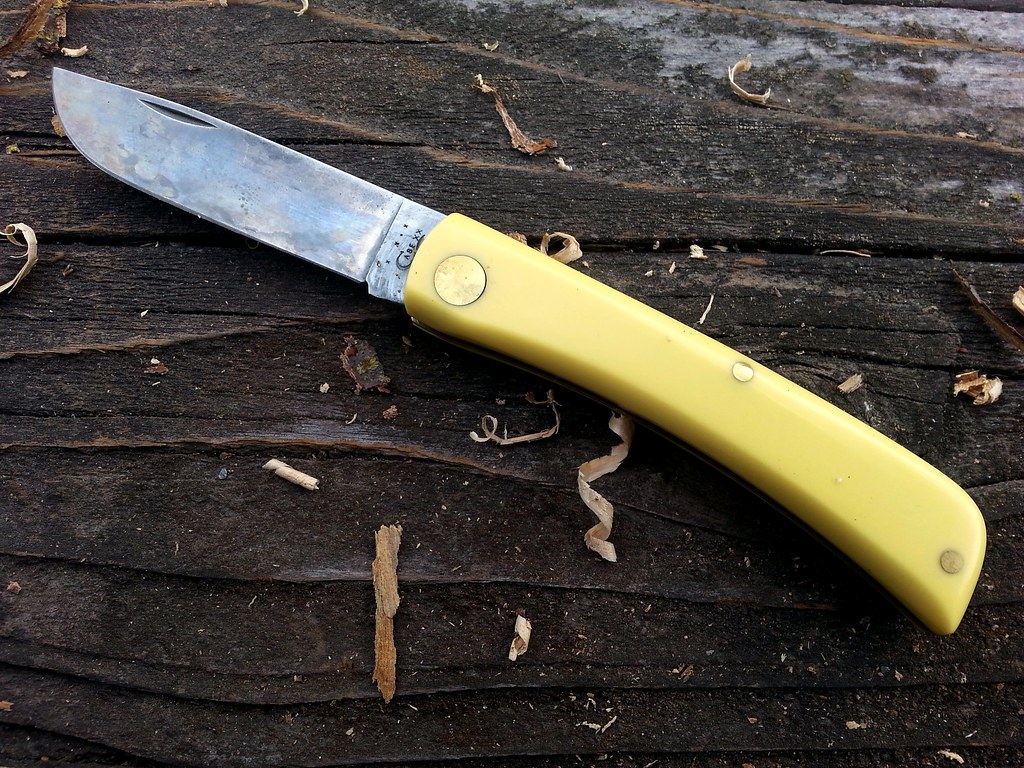Hello All:
I went to the case factory outlet here in Missouri yesterday. Thought that it would be cool to get a brand new traditional American made knife to celebrate the birthday of our great nation. I ended up getting the Sodbuster Jr. with chestnut panels and CV steel. This is my first NEW CV knife I have ever owned. I was just going to let the patina form naturally because I thought that forced seemed....well....seemed liked cheating. However the more I read the more I found out that the patina serves a far greater purpose than just looking cool, it protects the blade from rust. So this brings about my question, should I force a patina or not? I must admit, it would be nice to fight rust less. Thanks guys, looking forward to the discussion.
I went to the case factory outlet here in Missouri yesterday. Thought that it would be cool to get a brand new traditional American made knife to celebrate the birthday of our great nation. I ended up getting the Sodbuster Jr. with chestnut panels and CV steel. This is my first NEW CV knife I have ever owned. I was just going to let the patina form naturally because I thought that forced seemed....well....seemed liked cheating. However the more I read the more I found out that the patina serves a far greater purpose than just looking cool, it protects the blade from rust. So this brings about my question, should I force a patina or not? I must admit, it would be nice to fight rust less. Thanks guys, looking forward to the discussion.


